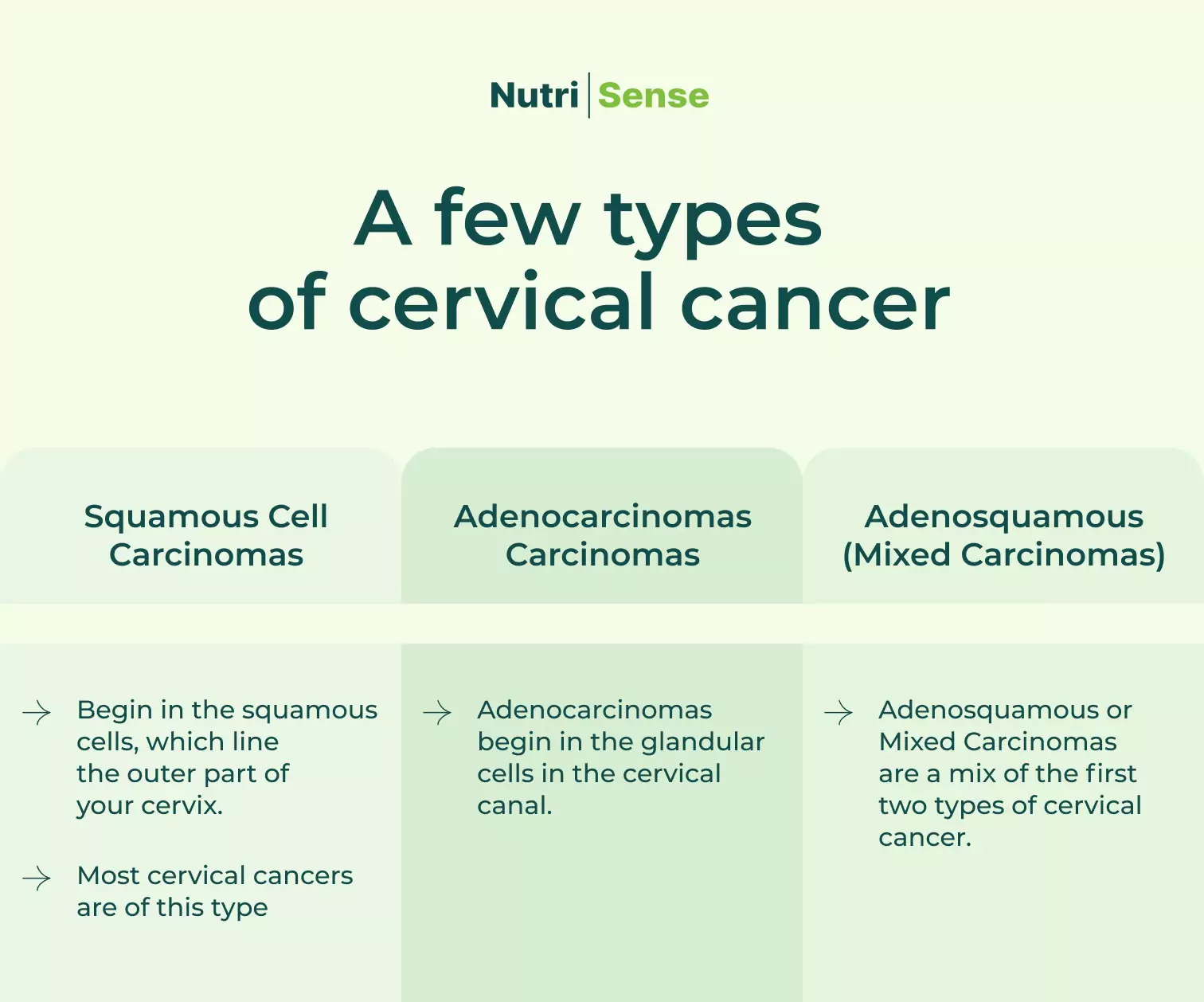Cervical Health Facts: What You Need to Know

Key Takeways
What do you know about the cervix? When you think of cervical health, do you think of cervical cancer screenings but don’t know anything beyond that? If your answer to any of these questions is yes, you’re not alone.
The female reproductive system is a complex and wonderful part of your anatomy—it can create new life, after all! An essential part of this system, the cervix, helps with your menstrual cycle, protects against infection, and helps during pregnancy and while giving birth.
However, the cervix is also a very sensitive part of the reproduction system, and it’s essential to care for it properly. It’s crucial to include cervical health in your health care plan to prevent the risk of various diseases and illnesses, including cervical cancer.
Of course, you should know as much as possible about it so you can do this effectively. Read on to find out more about the cervix and some interesting facts you should know about cervical health.
What is the Cervix?

As we mentioned before, the cervix plays a vital role in your reproductive system. If you didn’t already know, the cervix connects the lower part of the womb with the vagina—commonly known as the birth canal. It is about three to four centimeters long and structured in two parts. One is the endocervix, the inner part that contains glandular cells. The other is the ectocervix, the outer part (closer to the vagina), containing squamous cells.
The glandular cells produce a fluid called mucus, which covers the inside of the cervix and helps with lubrication. The squamous cells look like normal skin and protect the outer part of the cervix. The area where these two types of cells meet is called the transformation zone. It’s where a healthcare provider will do the cervical screening test, as it’s prone to infection.
The cervix helps with the transportation of sperm into the womb, and it allows the blood from the menstrual cycle to flow out and not build up in the womb. It also protects against infection, as the mucus protects the womb and the rest of the reproductive organs from bacteria and viruses that can cause diseases.
The cervix also plays a significant role in facilitating pregnancy. It’s because the process of ovulation involves the release of a mature egg from the ovary, which leads to a thinning of mucus to allow the sperm to travel up to the fallopian tube, where it can fertilize the egg. During pregnancy, the cervix closes until late in the third trimester. When it’s time to give birth, the cervix softens and stretches so that the baby can pass through the birth canal.
Importance of Cervical Health

From sexually transmitted infections to cervical cancer, bad cervical health can put you at high risk of a host of issues. Remember, the cervix protects the uterine cavity from any bacterial invasion with the help of mucus. When mucus flows down the cervix, it eliminates bacteria and other toxins. This discharge can help identify and prevent the cervix from various diseases.
Unfortunately, many problems can affect the cervix, especially since it’s a sensitive part of the body. One of the most common is cervical cancer, which occurs due to an infection caused by the human papillomavirus (HPV). This virus also spreads through skin-to-skin contact. Things like unprotected sexual experiences and multiple sexual partners can also increase the risk of infection.
Another common issue is cervicitis, an inflammation caused by infection, often caused by viruses like chlamydia, gonorrhea, and herpes that affect the cervix after unprotected intercourse. You should focus on early detection of cervicitis because, untreated, it can spread to the womb and fallopian tubes. It can cause pelvic inflammatory disease, an infection that could damage the entire reproductive system and lead to difficulty conceiving.
Risk Factors for Cervical Cancer and Other Cervix Issues

So, what causes cervix issues like cervical cancer, and what are the risk factors and symptoms that can help you recognize them? While some of the risk factors include unsafe sexual practices, weak immune systems, smoking, and early sexual activity, most cases of cervical cancer occur because of the sexually transmitted human papillomavirus.
One of the most common early-stage symptoms is unusual vaginal discharge. It happens because the cervix is trying to fight against certain bacteria or viruses, and it tries to protect the reproductive system. Another common symptom could be unusual bleeding in between menstrual cycles, caused by the inflammation of the cervix.
In some cases, a bump or an unusual growth could appear around the genital area, caused by genital warts. Pain or discomfort during urination or intercourse is also a common symptom. If the cervix is infected, it may become inflamed.
t then leads to pain during activities that are not usually painful. If you notice any of these symptoms, the best thing to do is contact your health care provider. They can help you focus on early detection and preventive measures for everything from HPV infections to cervical cancer and reproductive issues.
Caring for Your Cervix

Remember to see a health care provider if you experience any unusual vaginal discharge, bleeding, or pain so you can prevent any complications from cervical infections. To reduce the risk of disease, one of the first pieces of advice a healthcare professional will give you is to practice safe sex.
Things like using protection during sexual intercourse and being as confident as possible about the sexual health of your sexual partners to prevent sexually transmitted infections are good first steps. Besides this, another way to prevent infections and ensure early detection for various types of HPV is the PAP test (Papanicolaou test).
It’s a screening test where a doctor will take cell samples from the transformation zone in the cervix. A healthcare professional will examine them to detect cell changes and risk factors for infection. The test results will show any signs of cervical cancer or other risk factors. As the American Cancer Society notes, cases of cervical cancer drop significantly with this test.
Recommendations for how often you should get PAP tests can vary. Still, it’s a good idea to start taking them once you’re 21-years-old and then continue to take one every three years between the ages of 21-29. Once you’re over 30, you should consider taking the HPV test with your PAP test.
Another way to prevent infections and lower your risk of cervical cancer is the HPV vaccination. The HPV vaccine can protect against several types of human papillomaviruses, reducing the risk factors for cervical cancer.
What to Know About Cervical Cancer

According to the World Health Organization, cervical cancer is the fourth most common cancer in women. While all women are at risk, the Centers for Disease Control and Prevention notes that it occurs most often in those above 30.
Unfortunately, cancer researchers have found that uneven access to healthcare may be a leading cause of cervical cancer worldwide. Not everyone has access to regular screening and vaccination, which makes it challenging to prevent cases of cervical cancer adequately. Even cervical cancer treatment options like radiotherapy and chemotherapy are not available for everyone, which leads to an increase in the death rate among those with cervical cancer.
However, even if you follow screening guidelines, cervical cancer is not always preventable. When your body comes into contact with human papillomaviruses, your immune system tries to fight them. Sometimes, if your immune system is strong enough, the virus is destroyed. But there are times when the virus survives for years in the cervix and slowly transforms cervical cells into cancer cells that can multiply, causing cervical cancer.
There are a few types of cervical cancer. In oncology, these are known as squamous cell carcinomas, adenocarcinomas, and adenosquamous or mixed carcinomas. All those names may sound like a mouthful, and an oncologist would be the best person to help explain them in detail. But if you’re curious:

To do as much as possible to prevent cervix issues:
- Try to learn more about how your body functions and make regular visits to your healthcare provider.
- Ask about the symptoms of cervical cancer and get a complete checkup every year.
- Don’t forget about regular Pap tests and HPV tests!
The Relation Between Cervical Cancers and Glucose

Tumor cells need nutrients just like other types of cells do. Unfortunately, they take up glucose much faster than the other healthy cells. High glucose levels in the blood (before cervical cancer treatment like radiation) may make cancer cells more resistant to treatment. If cancer cells become resistant to radiotherapy, cancer can spread.
Consuming a diet rich in glucose can lead to insulin resistance and hyperinsulinemia, which means that your body produces a lot of insulin to lower blood glucose levels. It can also stimulate cell proliferation which leads to the development of cancers.
The Relation Between Nutrition and Cervical Health

One of the roles of the cervix is to fight bacteria and viruses with the help of the immune system. So, if your immune system is strong, you may have lower risk factors for infection. Several vitamins and minerals contribute to this, including vitamins A, B, C, and E.
Vegetables and fruits are rich in many essential vitamins and minerals that can reduce the risk of infection with HPV. For example, beta-carotene, an antioxidant that converts into vitamin A, may reduce the number of cancer cells and make the immune system stronger, lowering the risk of cancer. Vitamins A, B, C, and E, can strengthen the immune system and fight against harmful bacteria and viruses.
Find the right Nutrisense programto turn insight into progress.
Go Beyond Glucose Data with Nutrisense
Your glucose can significantly impact how your body feels and functions. That’s why stable levels are an important factor in supporting overall wellbeing. But viewing glucose isn't enough. Nutrisense, you’ll be able to learn how to use your body's data to make informed lifestyle choices that support healthy living.
One-to-one coaching
Sign up to access insurance-covered video calls to work with a glucose expert: a personal registered dietitian or certified nutritionist who will help tailor your lifestyle and diet to your goals.
Monitor and measure what matters
With the Nutrisense CGM Program, you can monitor your glucose with health tech like glucose biosensors and continuous glucose monitor (CGM)s, and analyze the trends over time with the Nutrisense App. This will help you make the most informed choices about the foods you consume and their impact on your health.
Find your best fit
Ready to take the first step? Start with our quiz to find the right Nutrisense program to help you take control.

Cheri is a registered dietitian and Health Co-Ordinator Product Development at Nutrisense, with a Master's degree from the University of Utah in Integrative Physiology and Nutrition. She has a strong interest in functional and integrative nutrition and emphasizes the importance of exploring and using your own body (symptoms, energy, mood, labs, CGM data) to find what your personal optimal is.




